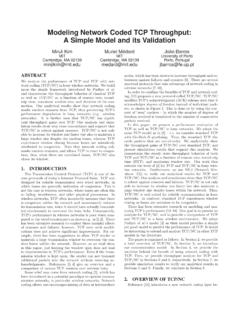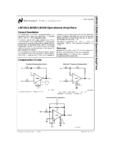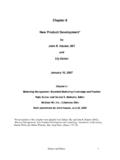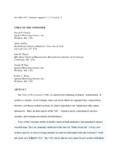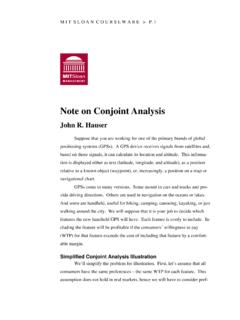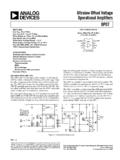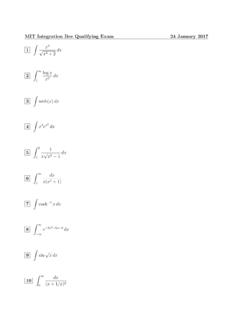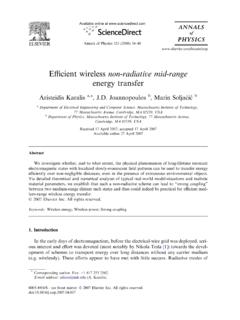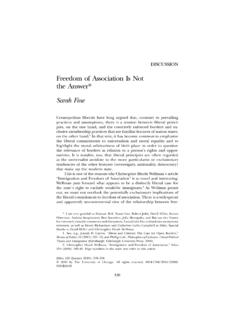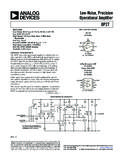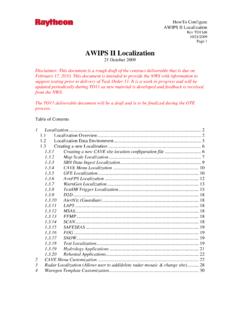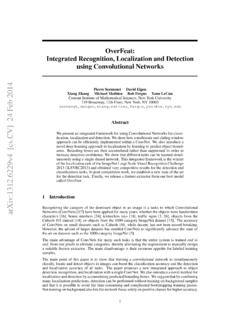Transcription of Minding the Billions: Ultra-wideband Localization for ...
1 Minding the Billions: Ultra-wideband Localization for DeployedRFID TagsYunfei Ma, Nicholas Selby, Fadel AdibMassachusetts Institute of RFID Localization systems fall under two first category operates with off-the-shelf narrowband RFID tags but makes restrictive assumptions on the environment or thetag s movement patterns. The second category does not make suchrestrictive assumptions; however, it requires designing new Ultra-wideband hardware for RFIDs and uses the large bandwidth todirectly compute a tag s 3D location. Hence, while the first categoryis restrictive, the second one requires replacing the billions of RFID salready produced and deployed paper presents RFind, a new technology that brings thebenefits of Ultra-wideband Localization to the billions of RFIDs intoday s world.
2 RFind does not require changing today s passive nar-rowband RFID tags. Instead, it leverages their underlying physicalproperties to emulate a very large bandwidth and uses it for local-ization. Our empirical results demonstrate that RFind can emulateover 220 MHz of bandwidth on tags designed with a communica-tion bandwidth of only tens to hundreds of kHz, while remainingcompliant with FCC regulations. This, combined with a new super-resolution algorithm over this bandwidth, enables RFind to perform3D Localization with sub-centimeter accuracy in each of the x/y/zdimensions, without making any restrictive assumptions on thetag s motion or the CONCEPTS Networks Cyber-physical networks;Mobile networks;Sen-sor networks;KEYWORDSRFID; Localization ; Battery-free; UWB; Smart EnvironmentsACM Reference format:Yunfei Ma, Nicholas Selby, Fadel Adib.
3 2017. Minding the Billions: Ultra-wideband Localization for Deployed RFID Tags. InProceedings of MobiCom 17, Snowbird, UT, USA, October 16 20, 2017,13 to make digital or hard copies of all or part of this work for personal orclassroom use is granted without fee provided that copies are not made or distributedfor profit or commercial advantage and that copies bear this notice and the full citationon the first page. Copyrights for components of this work owned by others than theauthor(s) must be honored. Abstracting with credit is permitted. To copy otherwise, orrepublish, to post on servers or to redistribute to lists, requires prior specific permissionand/or a fee.
4 Request permissions from 17, October 16 20, 2017, Snowbird, UT, USA 2017 Copyright held by the owner/author(s). Publication rights licensed to Associa-tion for Computing ISBN 978-1-4503-4916-1/17/10.. $ INTRODUCTIONA ccurate RFID Localization can be a game-changer for many indus-tries ranging from virtual reality to factory automation. For exam-ple, virtual reality systems, like the HTC Vive [28] and Facebook sOcculus Rift [44], rely on relatively large trackers like handheldmotion controllers. Accurate RFID Localization would enable us toreplace these handheld trackers with on-body RFID stickers thatcan track multiple user limbs.
5 Another application that can benefitfrom fine-grained RFID Localization is packaging quality control infactories and warehouses. For example, today s packaging controlends once a box is sealed. However, since many of today s packageditems are already tagged with RFIDs, accurate RFID localizationwould enable employees to check the number of items in a boxor whether the right item is in the right box even after the boxis sealed. More generally, absolute RFID Localization can enablemany applications in retail stores, factories & warehouses, virtual& augmented reality, and smart , the topic of RFID Localization has gained much attentionfrom the academic community over the past decade [31,41,48,52,53,57].
6 However, none of the past proposals can enable ubiquitouslocalization and deliver on the applications described above. Inparticular, early proposals in this space relied on measuring thereceived signal strength (RSS) [16,18,38,41,59] and the angle ofarrival (AoA) [14,32,60] and demonstrated a median accuracy ofthe order of tens of centimeters. Recent proposals have demon-strated finer centimeter-scale Localization accuracy. However, theseproposals either require furnishing the environment with a dense,surveyed grid of reference tags and localize by matching to ref-erence tags [17,53], and/or they require the tag or the reader tomove over multiple wavelengths on a predefined trajectory at apredefined speed [40, 48, 57].
7 In this paper, we investigate whether we can achieve sub-centimeter RFID Localization by measuring the time-of-flight (TOF) , the time it takes the signal to travel between a reader andan RFID. Accurate TOF measurements would allow us to localizeRFIDs without reference tags and without prior trajectory knowl-edge. In particular, the TOF can be mapped to the distance traveledby taking into account the speed at which the RF signals fundamental challenge in realizing this goal, however, is thataccurate TOF-based Localization hinges on the ability to measuretime at a very fine granularity.
8 In particular, achieving centimeter-scale Localization would require hardware that can support veryhigh sampling rate or very large bandwidth, often multiple GHzof bandwidth [11,19,34].1In contrast, RFIDs communicate at onlytens of kHz, , five orders of magnitude lower than such sys-tems. Hence, TOF-based Localization with such a communication1 Time resolution is inversely proportional to the powers up and switches between reflective and non-reflectiveHigh power signal @ 915 MHzBackscatter @ 915 MHzGate does not power up and switchNo response from RFIDLow power signal @ 960 MHzGate powers up and switches between reflective and non-reflectiveHigh power signal @ 915 MHzBackscatter @ 915 MHz & 960 MHzLow power signal @ 960 MHz(a) Today s RFIDs backscatter ISM frequencies(b) Weak signal outside ISM can t power up RFID(c)
9 RFind decouples sensing and power deliveryFigure 1: RFind leverages the physics underlying RFID simplicity, the figure only shows an RFID s frontend circuitry,consisting of an antenna inlay and a switching transistor. (a) An RFID powers up when the reader transmits a high power signal in the ISMband, , at 915 MHz. To respond, it modulates the voltage of the switching transistor, resulting in two backscatter states: reflective andnon-reflective. (b) An RFID cannot power up when a reader transmits an extremely low power signal outside ISM. (c) Decoupling powerdelivery and sensing: When a reader transmits both a high power signal in ISM and an extremely low power signal outside ISM, the RFID powers up (due to ISM-frequency) and reflects both frequencies simultaneously, allowing RFind to sense the channel even outside the would result in an accuracy of multiple kilometers.
10 Oneoption to overcome this challenge is to design new RFIDs that havelarge enough bandwidth to enable accurate Localization [20,23,37].Not only would such an approach require designing new hardwarefor RFID tags making them significantly more expensive and non-compliant with today s FCC regulations and RFID communicationprotocols but it would also leave out the billions of RFIDs alreadydeployed in today s world [39].We present RFind, a system that can achieve sub-centimeterRFID Localization by directly measuring the time-of-flightwithoutany hardware modification to passive narrowband RFID tagsanddespite their bandwidth limitations.
